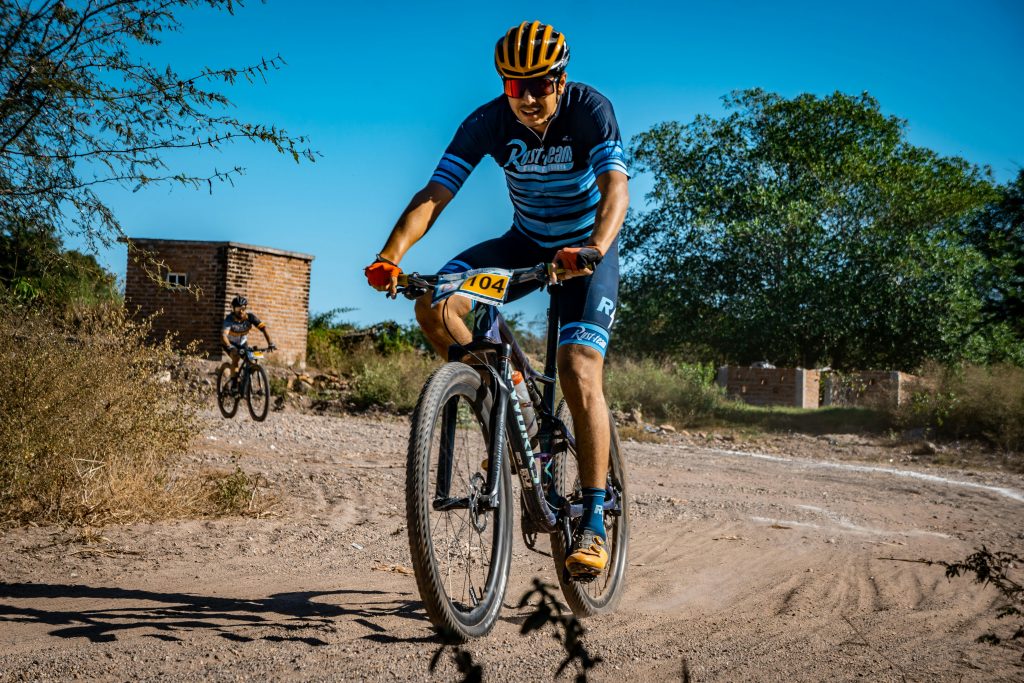Pedal Smart: A Cyclist’s Guide to Peak Health and Performance
The pursuit of cycling excellence often leads enthusiasts down paths of overtraining, improper nutrition, and equipment obsession that can actually hinder performance and compromise long-term health rather than enhancing athletic achievement. Many cyclists struggle with persistent fatigue, recurring injuries, and performance plateaus despite dedicating significant time and money to their training regimens, leaving them frustrated and questioning whether they possess the natural ability to reach their cycling goals. The challenge lies in distinguishing between effective training strategies and popular but counterproductive practices that dominate cycling culture, while developing sustainable approaches that support both immediate performance gains and lifelong cycling enjoyment.
Photo by Jose Ricardo Barraza Morachis
Competitive cyclist Amanda had trained religiously for three years, following popular high-intensity programs and investing heavily in performance gear, yet found herself increasingly exhausted and prone to overuse injuries that derailed her racing ambitions. Despite logging impressive weekly mileage and maintaining strict dietary restrictions she had read about online, her race times stagnated and her love for cycling began to diminish under the weight of constant fatigue and physical discomfort. Her transformation began when she discovered that peak cycling performance required a holistic approach that balanced training intensity with proper recovery, nutritional flexibility with metabolic health, and performance goals with sustainable practices that supported her body’s long-term adaptation and resilience.
Intelligent cycling performance optimization integrates evidence-based training principles with personalized health strategies that enhance both athletic achievement and overall well-being without sacrificing long-term physical sustainability. The most successful cyclists understand that peak performance emerges from consistent application of smart training methods, strategic nutrition planning, and recovery protocols that work synergistically to build strength, endurance, and resilience while preventing the burnout and injuries that derail many ambitious cycling careers. Effective cycling enhancement focuses on creating sustainable systems that support continuous improvement while maintaining the joy and health benefits that make cycling a lifelong pursuit rather than a short-term athletic endeavor.
1. Build a Strong Foundation: Strength and Flexibility
While cycling is an excellent cardiovascular activity, it primarily uses a limited range of motion and a specific set of muscles. Over time, this imbalance can lead to stiffness and potential injury. Cyclists often neglect the upper body and core, which are essential for stability and posture, especially on long rides. Incorporating simple bodyweight exercises like planks, squats, and lunges a few times a week can improve power transfer and reduce fatigue. Flexibility is equally important. Regular stretching, foam rolling, and yoga can increase mobility, allowing muscles to recover more efficiently and stay limber.
2. Soothe the Soreness: Recovery Without Pain Meds
Muscle aches are a natural part of training, but reaching for painkillers shouldn’t be your first step. Medications may mask the pain, but they don’t address the root cause. Instead, support your muscles with natural recovery methods.
Topical ointments can offer relief, but choose them wisely. Many are packed with synthetic ingredients that can irritate the skin or only provide a short-lived cooling sensation. It’s better to rely on naturally made products that aid healing without causing harm. Musclemud™ for instance is a muscle salve for cyclists formulated with essential oils and botanicals. It helps reduce inflammation, supports blood flow, and eases soreness without the side effects of harsh chemicals. When used after long rides or intense training sessions, it can help you bounce back quicker and ride stronger.
3. Fuel Up Right: Nutrition That Powers the Pedal
Cycling burns a lot of energy, so what you eat directly affects your stamina and recovery. Start with a balanced approach. Before a ride, eat easily digestible carbs like oats, bananas, or whole grain toast to fuel your muscles. During long rides, energy gels or fruits can keep your glycogen levels up. Afterward, focus on recovery with meals that include protein to rebuild muscles and carbs to restore energy stores. Hydration matters too. Drink water consistently and use electrolyte replacements during hot weather or longer sessions.
4. Get Serious About Sleep: The Ultimate Recovery Tool
You can train all you want, but if your sleep is poor, your performance will suffer. Sleep is when the body repairs tissues, balances hormones, and resets for the next day. Athletes need around seven to nine hours a night, and sometimes even more after tough rides. Without good sleep, your coordination, focus, and muscle recovery take a hit. Prioritize rest like you do your rides.
5. Train with Intention: Quality Over Quantity
It’s tempting to think that riding longer or more often will make you better, but that mindset often leads to burnout or injury. Smart training includes variety and rest. Mix up your sessions with intervals, endurance rides, and active recovery days. Pay attention to how your body feels. If fatigue lingers or motivation dips, it could be a sign to take a step back. Use a cycling app or journal to track progress and adjust based on your goals and energy levels. Remember, it’s not about riding the most—it’s about riding right.
6. Don’t Neglect Mental Conditioning
Cycling challenges more than just your legs, it pushes your mind to stay focused, calm, and resilient. Long rides, tough climbs, or headwinds can wear you down mentally as much as physically. Building mental endurance is just as important as training your body.
Start by practicing mindfulness during rides. Pay attention to your breathing, pedal rhythm, and posture. Use positive self-talk when things get hard. Remind yourself why you ride and what you’re capable of. Visualization is another helpful tool. These small habits can sharpen your mental game and help you stay clear-headed under pressure.
7. Gear Matters: Fit and Function Over Flash
It’s easy to get caught up in flashy bikes and accessories, but the most important investment you can make is in proper fit and comfort. Even the most expensive bike will work against you if it’s not set up correctly. A professional bike fit ensures that your saddle height, handlebar reach, and pedal alignment match your body’s mechanics. This reduces strain on your knees, back, and wrists while boosting your power and efficiency. Don’t overlook your clothing either. Choose breathable, moisture-wicking gear that fits well and allows for free movement.
Focus on what improves your performance, not just what looks good.
8. Stay Consistent, Not Perfect
One of the biggest mistakes cyclists make is chasing perfection. Skipping a ride, eating poorly for a day, or missing a stretch session won’t ruin your progress. What matters more is consistency over time. Building sustainable habits keeps you moving forward even when life gets busy. If you fall off track, just pick up where you left off without guilt. Small, consistent actions over weeks and months build real fitness and confidence.
9. Embrace Active Recovery Days
Rest is when the body adapts and grows stronger, but that doesn’t mean sitting around all day. Active recovery keeps your blood flowing, loosens stiff muscles, and helps you stay in the rhythm of regular movement. Light activities like walking, stretching, or an easy ride with low resistance can do wonders. These sessions aren’t about pushing performance—they’re about supporting it. Think of them as maintenance days that keep your system primed without adding stress.
Cycling is more than a sport or a routine, it’s a relationship between you and your body, your mind, and the road ahead. The difference between a cyclist who simply rides and one who thrives lies in the choices made off the bike just as much as on it. To pedal smart is to respect the process, to listen when your body speaks, and to invest in the habits that elevate not just your performance, but your well-being.
Achieve Cycling Excellence Through Smart Training
The journey to peak cycling performance becomes sustainable and rewarding when built upon principles that prioritize long-term health alongside immediate athletic gains, creating a foundation for continuous improvement that extends throughout your cycling career. Smart training approaches recognize that the most successful cyclists are those who master the art of balancing intensity with recovery, pushing their limits while respecting their body’s adaptation processes and individual response patterns. This intelligent approach to cycling development ensures that performance gains accumulate steadily over time rather than creating the boom-and-bust cycles that characterize many amateur training programs.
Successful cycling performance optimization requires embracing the mindset that true athletic excellence emerges from consistency, patience, and evidence-based decision-making rather than from following the latest training fads or copying the routines of professional athletes whose circumstances differ dramatically from recreational and competitive cyclists. The most rewarding cycling experiences happen when training becomes a sustainable lifestyle that enhances overall health and well-being while delivering the performance improvements that keep the sport challenging and engaging. This holistic approach creates cyclists who not only perform better but also enjoy greater longevity in the sport and maintain their passion for cycling throughout their lives.
Your cycling potential reaches its fullest expression when you commit to training smart rather than just training hard, implementing strategies that respect your individual physiology while systematically building the fitness, skills, and resilience that define exceptional cyclists. The combination of intelligent training methods, strategic health optimization, and sustainable practices creates a framework for achieving cycling goals that align with your personal circumstances and long-term wellness objectives. When you pedal smart, you discover that peak performance and optimal health are not competing goals but complementary aspects of a cycling journey that delivers both athletic satisfaction and lifelong enjoyment of this remarkable sport.





